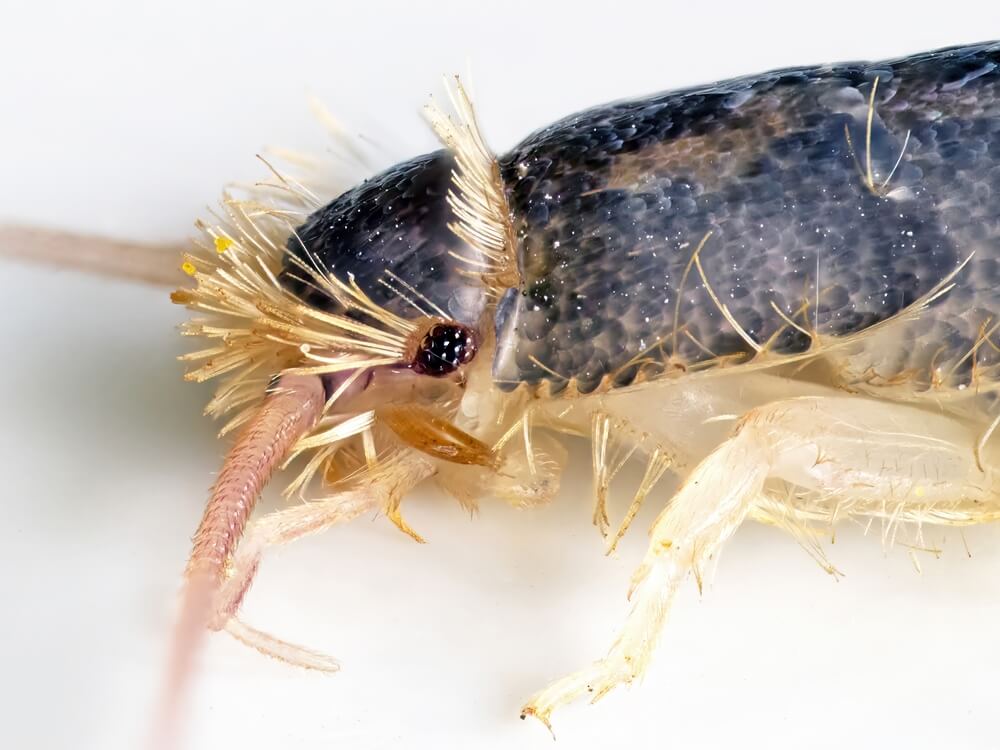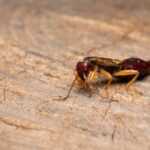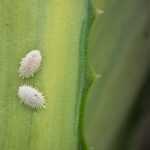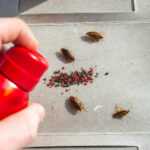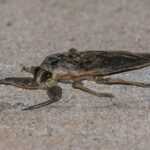Silverfish Control: Best Strategies to Identify and Eliminate
Silverfish are small, nocturnal insects known for their silvery appearance and destructive habits in homes. They thrive in damp, dark environments like basements and bathrooms, feeding on materials such as paper, fabric, and food. This article covers how to identify silverfish, the signs of an infestation, and effective control strategies. It is important to contact a local pest control professional for assessing and addressing silverfish infestations.
Key Takeaways
- Silverfish thrive in dark, damp environments, primarily basements, bathrooms, and kitchens, where they find shelter and food.
- Identifying signs of a silverfish infestation, such as visible silverfish, feeding damage, and droppings, is crucial for early detection and management.
- Preventive measures including reducing humidity, proper food storage, and regular cleaning can significantly decrease the likelihood of a silverfish infestation.
Understanding Silverfish
Silverfish are small, wingless insects that can often go unnoticed until they cause visible damage. These nocturnal creatures, also known as the silverfish bug, are common household pests that can infest items like bed sheets and cause damage to personal belongings. They are known for their swift, wriggling movements and their ability to hide in the smallest of cracks and crevices.
Knowing their biology and habits helps in controlling a silverfish infestation.
What Are Silverfish?
Silverfish, aptly named for their silvery, metallic appearance and fish-like movement, are small, wingless insects that measure about half an inch to one inch in length. Their teardrop-shaped, scaly bodies and long, slender antennae make them easily identifiable once you know what to look for. Despite their small size, silverfish can move quickly, making them adept at evading predators and humans alike.
In addition to their distinctive appearance, silverfish can leave behind signs of their presence that alert homeowners to an infestation. They shed their skin as they grow, and these tiny, translucent exoskeletons can often be found in areas where silverfish are active. Early recognition of these signs can stop a small problem from becoming a large infestation.
Where Do Silverfish Live?
Silverfish thrive in dark, damp environments, making basements, bathrooms, and kitchens ideal habitats. They are particularly drawn to areas with high humidity, such as basements and crawl spaces, where they can find both shelter and food sources. These pests prefer humidity levels between 75% and 95%, which are significantly higher than the typical household environment.
Cluttered areas like attics, basements, and storage spaces filled with cardboard boxes and old papers are also prime real estate for silverfish. These environments provide plenty of hiding spots and ample food sources, making it difficult to control silverfish once they have established themselves.
Silverfish Life Cycle
Understanding the life cycle of silverfish, including the role of silverfish eggs, is crucial in managing an infestation. Female silverfish lay eggs in dark, moist areas within homes, often depositing a few eggs at a time or in clusters of up to 20, depending on the species. These eggs are typically well-hidden in cracks, crevices, and behind baseboards, making them difficult to locate and eliminate. The reproduction silverfish process is essential to understand for effective control.
The maturation process from egg to adult silverfish takes about one year under favorable conditions. This relatively slow development means that an unnoticed infestation can grow steadily over time, leading to significant problems if not addressed promptly. Understanding their life cycle allows homeowners to better focus their efforts to prevent and control silverfish populations.
Signs of a Silverfish Infestation

Spotting silverfish in your home is often the first indication of an infestation. These insects are nocturnal and prefer to stay hidden during the day, but if you see them scurrying across your floors or walls, it’s a clear sign that you have a problem.
Early identification of a silverfish infestation allows for action before significant damage occurs.
Visible Silverfish Bugs
Seeing silverfish in your home is the most obvious sign of an infestation. These quick-moving pests are often found in bathrooms, kitchens, and basements, where they can find the moisture and food they need to survive. Their presence can also be indicated by small black droppings and yellow stains on surfaces, which are telltale signs of their activity.
Repeated sightings of silverfish, especially during the day, suggest a larger infestation that may require professional help. Frequent sightings indicate a need to control their population promptly.
Feeding Damage
Silverfish feed on a variety of household materials, including paper, fabric, and even some foods. This feeding can result in visible damage, such as holes in clothing, books, and wallpaper. The presence of these small, irregular holes is a clear indicator that silverfish are active in your home.
In addition to physical damage, silverfish can leave behind dark stains on the items they feed on. These stains, along with the holes, can ruin valuable items and lead to costly repairs. Silverfish harmful effects can be mitigated through early detection of feeding damage, which can help protect your belongings and prevent further deterioration.
Yellow Stains and Droppings
Another sign of a silverfish infestation is the presence of yellow stains and small, dark droppings resembling peppercorns. These stains are often the result of silverfish feeding on paper or fabric. The droppings, which are small and dark, can be found in areas where silverfish are active, such as behind furniture and along baseboards.
Identifying these signs is crucial for early detection and treatment of silverfish infestations. Identifying these indicators allows homeowners to address the problem before it escalates.
What Attracts Silverfish?
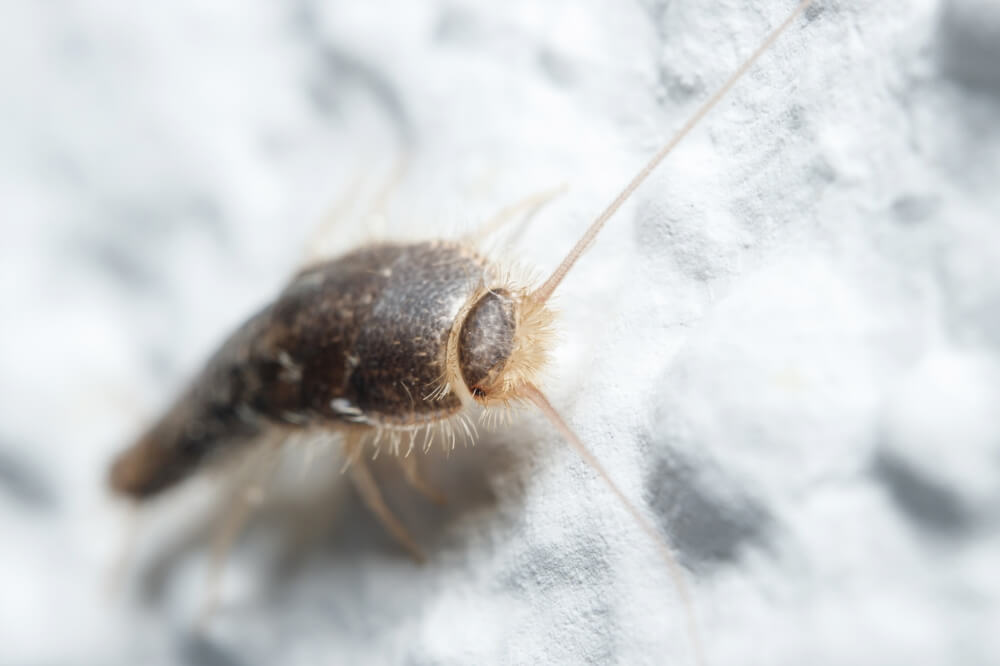
Knowing what attract silverfish to your home is key to preventing an infestation. These pests seek environments with food, moisture, and shelter.
By addressing these factors, you can make your home less appealing to silverfish.
Food Sources
Silverfish are attracted to a variety of food sources, particularly those high in carbohydrates and starches. They feed on items such as paper, glue, fabrics, grains, and even dead insects. This broad diet allows them to thrive in many different environments, making it important to keep potential food sources out of their reach. Silverfish eat a range of materials that can be found in homes.
Proper food storage prevents silverfish from accessing food sources. Storing items in airtight containers helps protect your belongings and reduces the likelihood of an infestation.
Moisture and Humidity
High humidity and moisture levels are major attractants for silverfish. These pests thrive in environments with humidity levels between 75% and 95%. Damp areas such as basements, bathrooms, and kitchens provide the perfect conditions for silverfish to live and reproduce.
Reducing humidity makes your home less hospitable for silverfish. Using dehumidifiers, improving ventilation, and fixing leaks can lower moisture levels and deter these pests.
Clutter and Storage
Cluttered areas with lots of hiding spots are ideal for silverfish. They often find shelter in cardboard boxes, old papers, and other stored items. This clutter provides both food and protection, making it difficult to control silverfish once they have established themselves in these areas.
Proper storage practices reduce the risk of a silverfish infestation. Keeping items off the floor, using plastic bins instead of cardboard boxes, and regularly decluttering storage areas make your home less appealing to these pests.
How to Prevent Silverfish Infestations
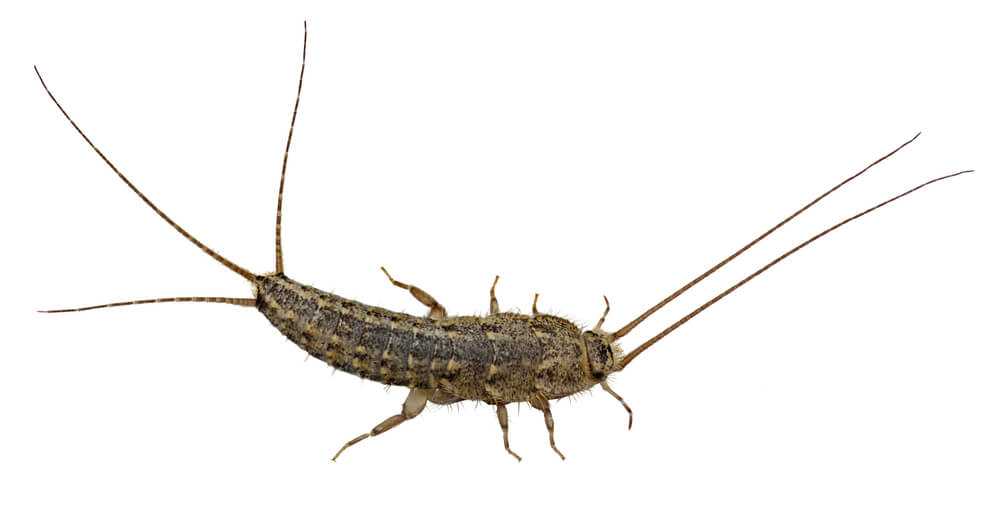
Preventing a silverfish infestation involves a combination of strategies to make your home less attractive to these pests. Regular cleaning, proper storage, and humidity control are key components of an effective prevention plan.
Reduce Humidity
Reducing humidity is one of the most effective ways to prevent silverfish infestations. Dehumidifiers, improved ventilation, and maintaining indoor humidity levels below 60% can significantly deter silverfish.
Fixing leaks and ensuring proper drainage can help reduce humidity levels. Creating a dry environment prevents silverfish from finding the conditions they need to survive.
Proper Storage
Proper storage of food and other items prevents silverfish infestations. Storing food items like flour and sugar in airtight containers keeps silverfish from accessing these food sources.
Using plastic bins instead of cardboard boxes for storage can also help reduce the risk of an infestation.
Regular Cleaning
Regular cleaning prevents silverfish infestations. Frequent vacuuming, particularly in corners and crevices, eliminates food sources and disrupts silverfish habitats.
A clean home reduces the likelihood of a silverfish infestation. Regular cleaning helps eliminate existing pests and makes your home less attractive to new ones.
DIY Methods to Get Rid of Silverfish

Several DIY methods can help manage and reduce silverfish populations in your home. These methods can control silverfish without professional intervention.
Sticky Traps
Sticky traps effectively manage silverfish populations. Placing them in areas where silverfish are frequently seen, such as bathrooms and kitchens, can significantly reduce their numbers.
Sticky traps are readily available and easy to use, making them a convenient option for controlling silverfish infestations. Monitoring silverfish activity with these traps allows for targeted elimination.
Diatomaceous Earth
Diatomaceous earth is a natural powder that dehydrates silverfish, leading to their demise when sprinkled in infested areas. This non-toxic method is safe for humans and pets but lethal to silverfish upon contact. Dusting diatomaceous earth in areas where silverfish are present can effectively control their population.
Diatomaceous earth is a simple and effective way to manage silverfish infestations. Targeting infested areas with this natural powder reduces silverfish numbers and prevents them from spreading.
Boric Acid
Boric acid is a highly effective insecticide that targets silverfish by disrupting their digestive and nervous systems. To apply boric acid, sprinkle it in cracks and crevices where silverfish are likely to hide, ensuring thorough coverage for maximum effectiveness.
When using boric acid, keep pets and children safe by applying it in inaccessible areas and following packaging instructions.
When to Call a Professional Pest Control Company
Sometimes, silverfish infestations are too persistent or large for DIY methods. Knowing when to call a professional pest control company can save time and effort.
Persistent Infestations
Persistent silverfish infestations indicate a larger problem that DIY methods may not handle. If silverfish keep returning despite your efforts, it’s time to call a professional pest control company.
A pest control professional can thoroughly inspect your home to identify the extent of the infestation and its causes. Targeting the root of the problem allows for comprehensive solutions to eliminate silverfish and prevent future infestations.
Expert Techniques
Hiring a professional pest control company ensures access to expert techniques and advanced tools for detecting and eliminating silverfish infestations. Professionals use a combination of chemical treatments, traps, and other methods tailored to your situation.
If DIY methods fail, a professional can offer more effective solutions. They can also provide ongoing monitoring and prevention strategies to ensure silverfish do not return.
Prevention Plans
Professional pest control companies can create customized prevention plans to keep silverfish and other pests at bay. These plans often include regular inspections, targeted treatments, and recommendations for reducing humidity and clutter, including options for local pest control.
Implementing a combination of effective prevention strategies can significantly reduce the likelihood of silverfish infestations. Working with a professional ensures a pest-free home and prompt addressing of potential issues.
Silverfish are common household pests that thrive in dark, damp environments. By understanding their habits, recognizing the signs of an infestation, and taking preventive measures, you can protect your home from these destructive insects. Early detection and effective control strategies, whether DIY or professional, are key to keeping silverfish at bay. Take action now to safeguard your home and belongings from silverfish infestations.
Frequently Asked Questions
The main signs of a silverfish infestation are the presence of silverfish bugs, small black droppings, yellow stains, and damage to items like paper and fabric. Immediate attention is recommended upon noticing these indicators.
To effectively prevent silverfish from entering your home, it is crucial to reduce humidity with dehumidifiers, store food in airtight containers, and maintain a clean environment through regular vacuuming. These measures will significantly deter silverfish infestations.
DIY methods are indeed effective in controlling silverfish, with tools such as sticky traps, diatomaceous earth, and boric acid proving useful. Implementing these strategies can significantly reduce silverfish populations in your home.
You should contact a professional pest control company for silverfish if the infestation is persistent or too large for DIY methods to manage effectively. Timely intervention can prevent further damage and ensure a thorough resolution.
Silverfish are primarily attracted to environments with high humidity, food sources such as paper and fabric, and cluttered areas that offer ample hiding places. To reduce their presence, minimize moisture and declutter your living space.
"*" indicates required fields
"*" indicates required fields
